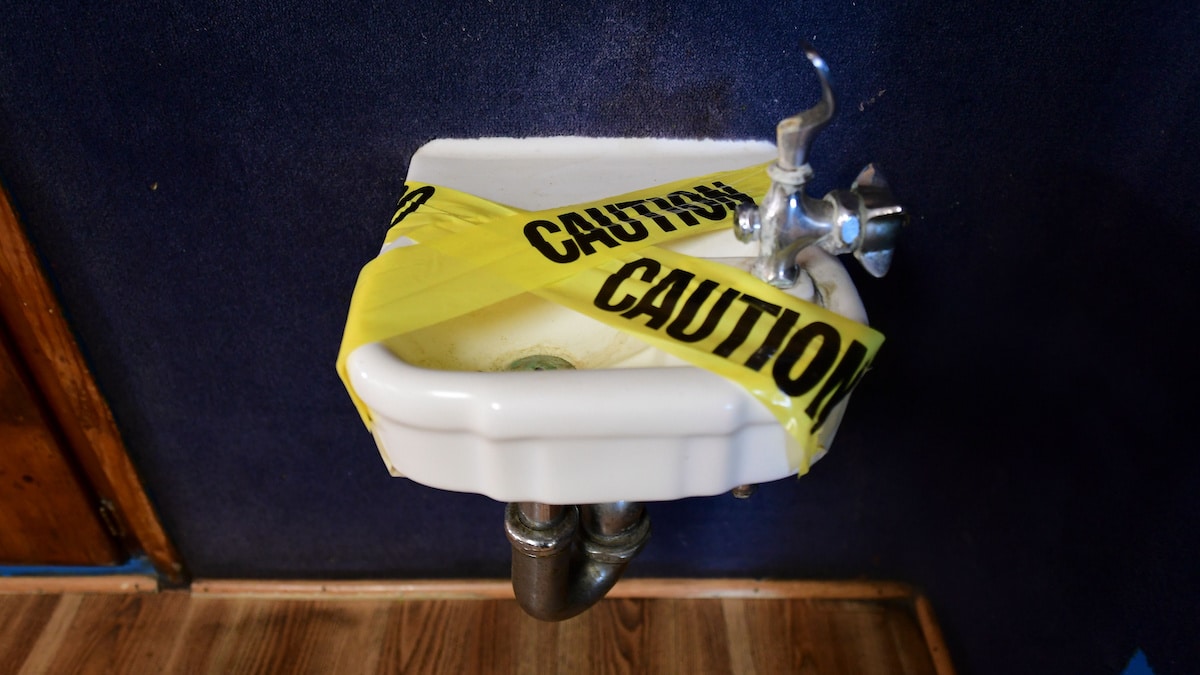
Legionnaire’s Bacteria Found in Drinking Water at Nine Reopened Schools

Nine schools in Ohio and Pennsylvania have found legionella bacteria in their drinking water. FREDERIC J. BROWN / AFP via Getty Images
In addition to taking precautions against the novel coronavirus, schools across the country find themselves needing to worry about a new scourge: legionella bacteria in their drinking water, according to The New York Times.
Recently, nine schools in Ohio and Pennsylvania found the harmful bacteria in their water. In Fox Chapel, PA, a suburb of Pittsburgh, four out of the town’s six schools tested positive for the bacteria. Because the schools were unused for so long, nearly six months, the water just sat in the pipes and did not have a chance to move. That created a condition for the bacteria to thrive, according to WPXI News in Pittsburgh.
According to the Centers for Disease Control and Prevention, people get sick when they inhale mist that has the bacteria or they ingest water with the bacteria in it. It can cause severe pneumonia or lung infection, which is worrying when the nation is already grappling with COVID-19, an infectious disease that leads to severe pneumonia.
Similarly, schools outside of Dayton, Ohio found the bacteria in their water last week. In all of those cases, the outbreak was noticed in locations that were far from classrooms or drinking fountains, such as one faucet in a seldom used bathroom, according to Dayton Daily News.
“We would have capability to wash hands, we would provide drinking water, we have toilets that are working, and we have the ability to serve lunch,” said superintendent Rob O’Leary, defending the district’s decision to proceed with in-person instruction and to keep the schools open, as Dayton 24/7 reported.
O’Leary added that the school district ran disinfectant through all the school’s water lines and cleaned the aerators on all of its faucets.
The Milton-Union school district, also in Ohio, received a federal grant to test its water over the summer. It found the bacteria in a drinking fountain and in two faucets on only the cold-water side, according to WHIO News in Ohio.
“Ice machines we tested it all,” said Tim Swartztrauber, West Milton Water Supervisor and Chief Inspector to WHIO. “Luckily we did because we did find legionella. We tested every drinking fountain and we got it in a drinking fountain. Without that this probably would have been missed.”
Swartztrauber added that they ran chlorine through the system to disinfect it and then flushed out the chlorine to make the water safe again.
Andrew Whelton, an associate professor of civil, environmental and ecological engineering at Purdue University in Indiana, was involved in the study at the Milton-Union schools and said it would not have been possible without the federal grant. That leaves a question of how many schools across the country are not testing their water because they don’t have the funds to do it, according to The New York Times.
“If somebody contracts legionella and legionnaires disease the exposure can be fatal,” Whelton said to WHIO. “So it is serious.”
It’s highly unusual for schools to go for such an extended time without use. Even during the summer months, there’s often summer school, sports practice, and custodial work being done.
“Schools generally do not have a water management plan,” Whelton said to the New York Times. “There’s a myth that most do. They don’t in my experience.”
Whelton told The New York Times that the bacteria would likely show up with greater prevalence if schools actually conducted tests.
“If parents haven’t heard from their schools about whether or not testing is being conducted, then they should start asking questions,” he said.
- 'This Will Be the Biggest Loss of Clean Water Protection the Country ...
- Flint: 5 Years Later, and Our Water Is More Threatened Than Ever ...
- California Public Health Crisis Looms With Water-System Failures

 233k
233k  41k
41k  Subscribe
Subscribe 